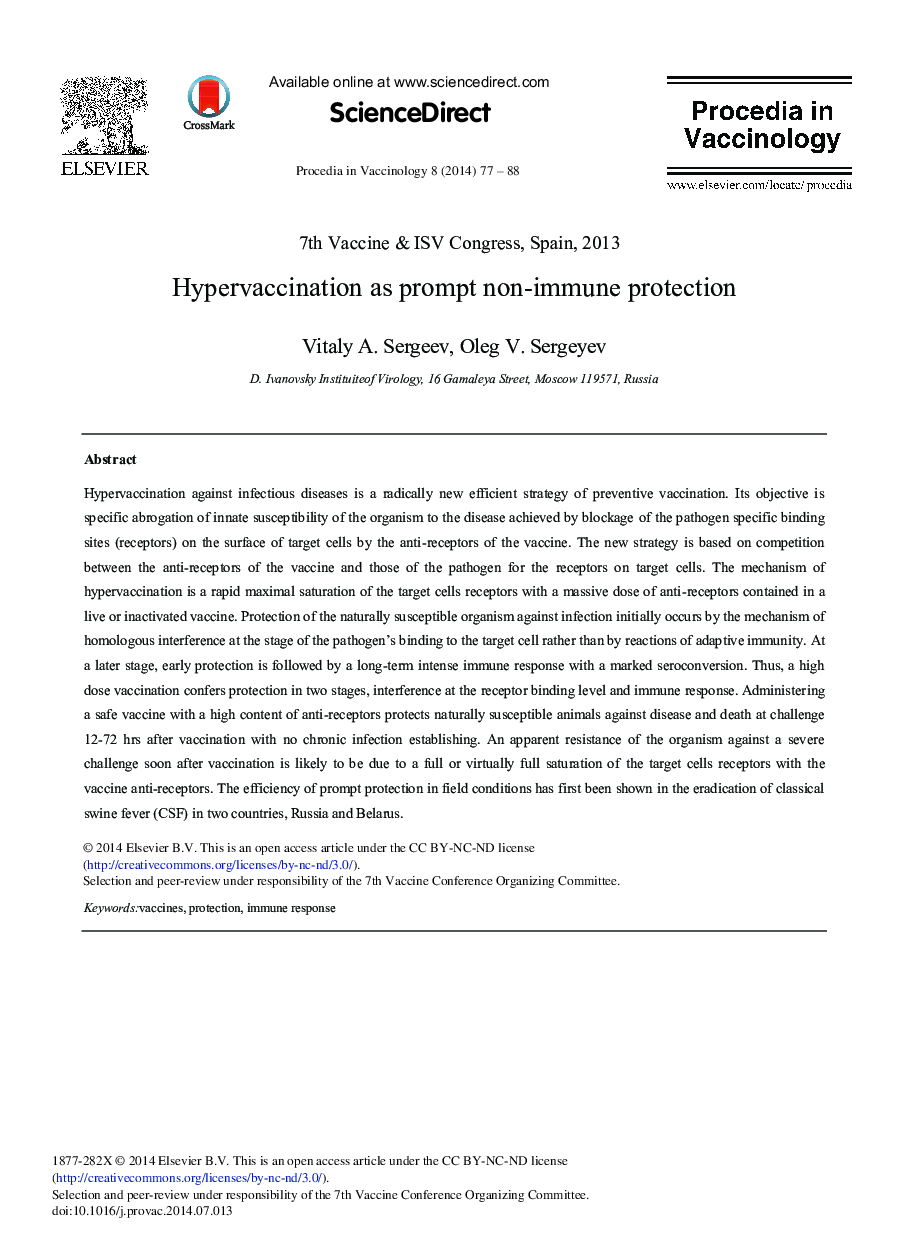| Article ID | Journal | Published Year | Pages | File Type |
|---|---|---|---|---|
| 2473766 | Procedia in Vaccinology | 2014 | 12 Pages |
Hypervaccination against infectious diseases is a radically new efficient strategy of preventive vaccination. Its objective is specific abrogation of innate susceptibility of the organism to the disease achieved by blockage of the pathogen specific binding sites (receptors) on the surface of target cells by the anti-receptors of the vaccine. The new strategy is based on competition between the anti-receptors of the vaccine and those of the pathogen for the receptors on target cells. The mechanism of hypervaccination is a rapid maximal saturation of the target cells receptors with a massive dose of anti-receptors contained in a live or inactivated vaccine. Protection of the naturally susceptible organism against infection initially occurs by the mechanism of homologous interference at the stage of the pathogen's binding to the target cell rather than by reactions of adaptive immunity. At a later stage, early protection is followed by a long-term intense immune response with a marked seroconversion. Thus, a high dose vaccination confers protection in two stages, interference at the receptor binding level and immune response. Administering a safe vaccine with a high content of anti-receptors protects naturally susceptible animals against disease and death at challenge 12-72 hrs after vaccination with no chronic infection establishing. An apparent resistance of the organism against a severe challenge soon after vaccination is likely to be due to a full or virtually full saturation of the target cells receptors with the vaccine anti-receptors. The efficiency of prompt protection in field conditions has first been shown in the eradication of classical swine fever (CSF) in two countries, Russia and Belarus.
